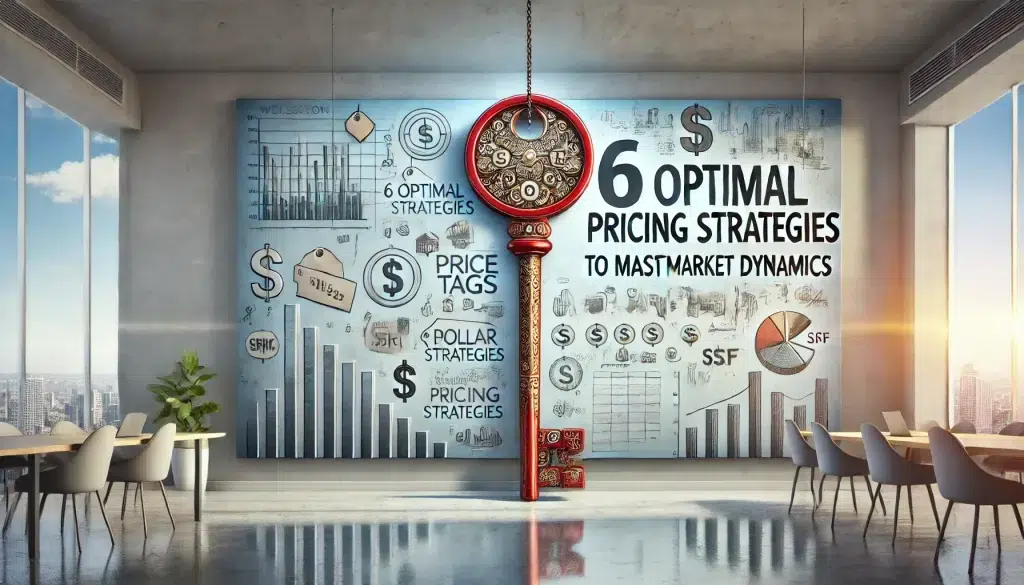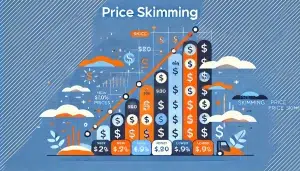
In the competitive realm of e-commerce, understanding market dynamics is crucial for setting prices that attract customers and maximize profits. Market dynamics encompass pricing forces, including supply and demand fluctuations, competitor actions, and consumer behavior. By grasping these factors, businesses can adjust their strategies to remain competitive and achieve optimal pricing.
This article will discuss the essentials of market dynamics, explore the concept of optimal pricing, and outline actionable steps to adapt these insights for your business success.
What Are Market Dynamics?
Market dynamics refer to the forces that influence pricing and behavior within an economy. These forces can be complex and multifaceted, encompassing changes in supply and demand, competitor actions, and consumer preferences.
For example, during the COVID-19 pandemic, shifts in consumer behavior and supply chain disruptions significantly impacted pricing strategies across various industries. Similarly, a sudden increase in raw material costs can drive up prices, while new technological advancements might lower production costs and affect market prices.
Competitors’ pricing strategies also play a crucial role; for instance, a significant retailer offering deep discounts can pressure others to adjust their prices to stay competitive.
Understanding these dynamics allows businesses to predict trends and adjust their strategies to maintain the optimal pricing for profitability and competitiveness.
Critical aspects of market dynamics include:
Consumer Reactions
Consumer reactions to price changes can significantly impact a business’s sales and profitability. For example, if a company raises prices, customers might reduce their purchases or switch to cheaper alternatives.
Conversely, lowering prices can increase demand but may also reduce profit margins.
Understanding how consumers respond to different pricing strategies helps businesses set prices that maximize sales volume and profit.
Supply and Demand Shifts
Supply and demand shifts directly influence pricing and market behavior. For instance, increased demand for certain products during the holiday season can lead to higher prices.
Conversely, an oversupply of goods might necessitate price reductions to clear inventory. Recognizing these patterns allows businesses to adjust prices proactively, ensuring they remain competitive and profitable even as market conditions fluctuate.
Supplier Responses
Supplier responses to changes in demand are crucial for maintaining supply chain efficiency and cost management. When demand increases, suppliers might raise prices due to higher production costs or scarcity of materials.
Conversely, decreased demand might lead suppliers to lower prices to stimulate sales. Businesses that understand supplier dynamics can negotiate better terms and adjust their pricing strategies to reflect changes in supply costs, maintaining their margins and competitive edge.
Grasping these dynamics allows businesses to anticipate market trends and make informed pricing decisions, ultimately leading to better financial performance and market positioning.
What is the Optimal Pricing?
Optimal pricing is the price point where total profits are maximized. This involves balancing what customers are willing to pay and the business’s profitability. For example, a luxury brand might set higher prices because their customers perceive a higher value in their products, whereas a discount retailer would need to keep prices low to attract bargain hunters.
Optimal pricing can fluctuate due to rapid changes in e-commerce environments, such as new market entrants, technological advancements, or shifts in consumer behavior. Regularly revisiting and adjusting pricing strategies ensures businesses stay competitive and profitable.
Factors influencing optimal pricing include:
Perceived Value
Understanding how customers perceive the value of your product is crucial for setting optimal prices.
For instance, Apple products often command higher prices because consumers perceive them as premium due to their design, quality, and brand reputation. Marketing, customer reviews, and brand loyalty can influence perceived value.
By accurately gauging how customers value their products, businesses can set prices that maximize willingness to pay, enhancing sales and profitability.
Competitor Pricing
Continuously tracking and analyzing competitors’ prices is essential for informed pricing strategies. For example, if a competitor lowers their prices, it might necessitate a strategic response to maintain market share.
Conversely, if competitors increase prices, you may be able to adjust your pricing for higher margins. Utilizing competitor price monitoring tools helps businesses stay aware of market trends and adapt their pricing strategies accordingly, ensuring they remain competitive without sacrificing profitability.
By incorporating these elements, businesses can set prices that attract customers while maximizing profits. Understanding perceived value and competitor pricing allows for a balanced approach that adapts to market conditions and customer expectations.
Fundamental Market Dynamics to Monitor
Understanding and responding to market dynamics is essential for any business aiming to optimize its pricing strategies. Companies can make informed decisions that enhance profitability and competitiveness by monitoring key aspects such as customer behavior, competitor actions, and economic conditions. Below, we delve into the critical market dynamics every business should watch.
1. Understand Customer Shopping Habits
Customer behavior significantly impacts market dynamics. To optimize pricing effectively, businesses must:
- Identify customer segments and their shopping patterns. For instance, a fashion retailer might find that younger customers prefer shopping late at night, whereas older customers shop during the day.
- Analyze when and what customers purchase. Seasonal trends, such as increased toy sales during the holidays, provide valuable insights into customer habits.
- Adapt strategies to enhance customer experiences and meet changing preferences. Implementing user-friendly website features or personalized marketing can improve customer satisfaction and drive sales. For example, using data analytics to offer product recommendations based on previous purchases can increase conversion rates.
By understanding these habits, businesses can tailor their pricing and marketing strategies to meet customer needs and optimize sales.
2. Implement a Personalized Pricing Strategy
Tailoring prices to individual customer needs can significantly boost sales. To implement an effective personalized pricing strategy:
- Gather data on customer behavior, preferences, and purchase history. For example, e-commerce platforms can use cookies and purchase history to segment customers and understand their preferences.
- Offer personalized deals to loyal customers and new visitors based on their profile. A subscription-based service might offer a discounted rate for first-time users or exclusive deals for long-term subscribers to enhance loyalty and attract new customers.
Personalized pricing strategies increase sales and foster customer loyalty by making customers feel valued and understood. This approach can lead to higher customer retention and lifetime value.
3. Track Competitor Actions
Staying ahead in the market requires continuous monitoring of competitors. To effectively track competitor actions:
- Conduct regular market research to understand competitor strategies. For instance, using competitive analysis tools to monitor competitors’ promotions, product launches, and market positioning can provide valuable insights.
- Use competitor price tracking tools for up-to-date pricing data. These tools can alert businesses to price changes in real-time, allowing them to adjust their prices accordingly.
This information helps you make strategic pricing decisions that keep you competitive. For example, if a competitor significantly lowers their prices, a business can decide whether to match the prices or highlight the superior value of their products.
4. Ensure High-Quality Products and Services
Quality plays a vital role in pricing and customer perception. To ensure high quality:
Offer high-quality products to build a strong brand image. A company known for its durable and reliable products, like Apple, can command higher prices and maintain customer loyalty.
Address customer needs and pain points effectively. Providing excellent customer service and standing behind product warranties can enhance perceived value and justify premium pricing.
High-quality offerings justify higher prices and build customer trust. This trust can lead to repeat business and positive word-of-mouth referrals, further solidifying the brand’s market position.
5. Adapt Pricing Strategies During Economic Uncertainty
Economic conditions greatly influence market dynamics. To adapt pricing strategies during periods of economic uncertainty:
Monitor economic trends and adjust prices accordingly. For instance, during an economic downturn, businesses might lower prices or offer more promotions to maintain sales volume.
Communicate transparently with customers about price changes. Explaining the reasons behind price adjustments, such as increased costs or maintaining product quality, can help keep customer trust.
By adapting optimal pricing strategies to economic conditions, businesses can remain resilient and continue to attract customers even in challenging times. Transparent communication ensures customers understand and accept necessary price changes, maintaining loyalty and trust.
6. Use Pricefy.io for Optimal Pricing
Pricefy offers advanced tools to help businesses navigate market dynamics and set optimal prices. With real-time competitor price monitoring, you can quickly respond to market changes and stay ahead.
Advanced data analytics provide insights into customer behavior and market trends, helping you tailor your pricing strategies.
Personalized pricing features allow customized offers based on customer profiles, boosting sales and loyalty.
Optimal pricing strategies ensure your prices remain competitive and profitable. Comprehensive reporting tools offer detailed insights into pricing performance, enabling data-driven decisions for continuous improvement.
Conclusion
Understanding and adapting to market dynamics is essential for setting optimal pricing.
By monitoring customer behavior, competitor actions, and economic conditions, businesses can make informed pricing decisions that enhance profitability and competitiveness.
Implementing personalized pricing strategies and ensuring product quality further strengthens your market position.




